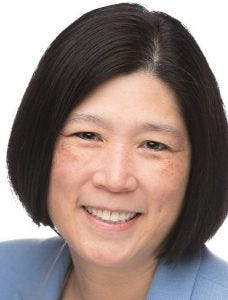Aruba Delays Silver Peak Channel Integration, Emphasizes Partner Choice
Sixty percent of Silver Peak partners were selling Aruba before last year's acquisition.

Aruba Networks channel executives are taking a patient approach to onboarding the Silver Peak partner program.
HPE acquired Silver Peak last year with the intention of bringing it into Aruba. Last month at Aruba Atmosphere, Aruba executives unveiled the integration of Silver Peak’s portfolio into the Aruba Edge Services Platform.
Jim Harold, Aruba’s vice president of North American channels, said the company initially kept the partner programs separate in order to protect Silver Peak Partners who had invested in the Silver Peak program.. He said Aruba took the same approach when HPE bought Aruba in 2015.

Aruba’s Jim Harold
“We went through a similar motion, and it really kept the partners whole and relaxed — confident that they weren’t coming into a scenario where all the big platinum partners would take over the world,” Harold said.
For now, the plan is to keep the programs separate through the end of Aruba’s fiscal year, which ends Oct. 31.
“Right now, for any partner that wants to sell Silver Peak, we have them selling in the Silver Peak program, and we’ve got a host of trainings and certifications that are all set to go. And we’ve had great success with them,” Harold said.
We recently compiled a list of 20 top SD-WAN providers offering products and services via channel partners. |
He added that more than 100 Aruba partners have signed up to sell Silver Peak since the acquisition.
At some point, however, some form of program integration will occur.

Aruba’s Donna Grothjan
“Right now we’re taking a look at when’s the right point to do the integration,” said Donna Grothjan, Aruba’s vice president of worldwide channels. “It will ultimately it will be under the Partner Ready for Networking umbrella.”
Aruba has established two key changes for Silver Peak partner program members for now. First, they aligned the Silver Peak revenue thresholds to match Aruba’s. Second, they extended Silver Peak partner certifications to two years, once again matching Aruba’s.
“We’re trying to assimilate first so that there isn’t this wholesale change for the partners,” Grothjan said.
Key Differences?
Grothjan said she and her team have sought to discern the key differences and similarities between legacy Aruba and Silver Peak partners. Though Aruba has delivered software-defined branch (SD-branch) solutions for a long time, the software-defined wide area networking (SD-WAN) market that Silver Peak plays very well in carries different implications.
However, Grothjan concluded after her research that Aruba and Silver Peak partners don’t hold particularly vast differences. Indeed, approximately 60% of Silver Peak’s partners already worked with Aruba; thus, Aruba needed to work more to give partners additional choice.
“There is not a lot of change or a big shift or heavy lift of any kind for the partners. It’s really about the opportunity to understand the Edge Services Platform and how that’s a broader selling value proposition for them, because they can extend with single customers into more solutions and more offerings with their network,” Grothjan said.
3 Options
Grothjan said Aruba is stressing partner choice within its own program. The Aruba Partner Ready program divides into three different business models. Each category leverages the Aruba Central network management and monitoring solution, but a different party takes charge of Central in different categories.
First, GreenLake for Aruba provides an Aruba-branded resell model. Here Aruba does the monitoring using Central and takes action.
“The role of the partner remains the same,” Grothjan said. “They’re doing all of the assessment, they’re selling the solution to the customer, and they’re doing the integration. But if the customer’s looking for somebody to manage their network for them, obviously the partner has the choice to do that, but we’ll do that under the managed-connectivity-as-a-service model.”
Second, the Partner Ready for MSP model allows partners to build their own managed services practice. Partners will uses their own network operations center (NOC) and will use Central to manage their clients’ environments. Central includes a managed services dashboard for them and wireframes that allow them to showcase their capabilities.
In addition, Partner Ready for MSP uses subscription-based financing, which MSPs requested. Partners had the opportunity to take a leasing option, but Grothjan said they didn’t want to make as large of a capital investment.
“They want to be able to offer their customers the hardware, the software and any of their own services wrapped up into an as-a-service package,” she said.
Harold said Aruba has recruited several “pure-play” MSPs that focus 100% on managed services.
“Their feedback is, ‘You guys got it right.’ They may not have been happy with their other vendor, based on a couple things in our program that really hit the mark for them,” he said.
Each partner category can take advantage of HPE Financial Services (HPEFS) and offer professional services to customers.
Want to contact the author directly about this story? Have ideas for a follow-up article? Email James Anderson or connect with him on LinkedIn. |
About the Author(s)
You May Also Like


